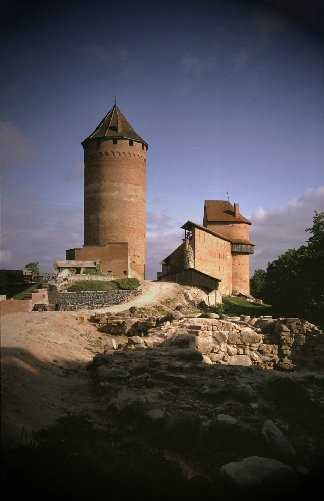
Castles
of
Latvia
 |
Introduction
Before their christianisation, the Baltic and Finnish tribes living on the territory of what is now the republic of Latvia built large numbers of hilltop fortresses, but as these were all made of wood only the characteristically shaped castle mounds remain.
Building in stone and brick began only after the arrival of Christian missionaries and the knight crusaders sent to convert the heathen tribes.
The combination of west-European feudalism, strict militarism and their expansion in a hostile and ethnically foreign land where they remained a culturally separate entity, resulted in a wide array of castle architecture.
Furthermore, Livonia, as it was then known, was hardly a uniform state, but rather a checkerboard of knightly and ecclesiastic possessions. Conflicts between the Livonian Order and the Archbishopric of Riga went from animosity to open warfare, with the citizens of Riga and other cities becoming an important factor too.
After the decline of the Livonian Order, the knights remained and kept their possessions as a land-owning aristocracy. Even their incorporation into Poland and Russia did not change this situation very much. In Latgallia, those originally German nobles were assimilated into Polish nobility, while those under Russian sovereignty enjoyed special privileges at the Imperial court.
Not surprisingly this resulted in widespread resentment among the Latvian peasantry and emerging national intelligentsia, culminating in the 1905 Peasants' Revolt, which was largely aimed against the German landowners. Many castles and mansions were plundered and burned down; some were afterwards reconstructed, others remain in ruins.
A B C D E F G H I J K L M N O P R S T U V Z
A short chronology:
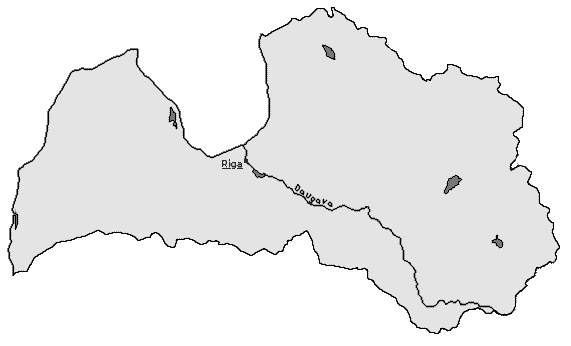
 |
Aizpute
(Hasenpoth)
Ruins of Order Castle
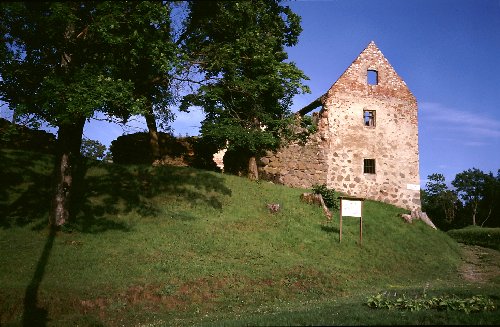
Situated on the edge of one of Latvia's most picturesque little villages, which alone is worth the visit.
Founded in the 13th century on the site of a Couronian fortress, the castle guarded the border between the Order and the Bishopric Territories.
Aluksne
(Marienburg)
Castle ruins on island.
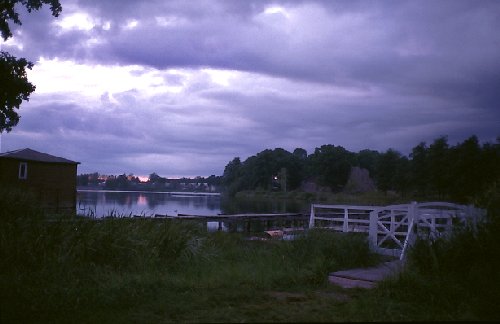
Nice village, ruins of rather large castle. Attractively situated on island, it is now used as open-air theatre.
Founded in 1342 to guard the Order territory and the Riga-Pskov trade route against easterly attacks.
1582 in Polish-Lithuanian hands, 1629 Swedish.
During the Nordic War in 1702 Russian troops sacked the village. The inhabitants fled to the castle, but were taken prisoner after the Swedish surrender. Among them was Maria Skavronska, who later married Czar Peter I. After his death she became Empress Catherine I of Russia.
Araisi
(Arrasch)
Castle ruins on peninsula.
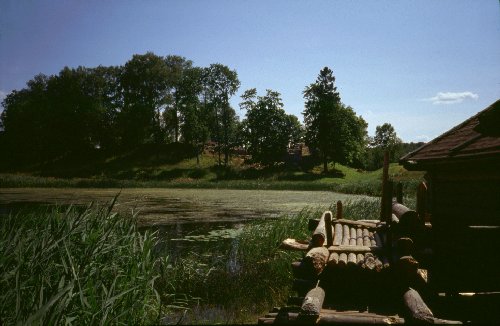
Seen from the reconstructed 9-10th C. wooden island village. The Order castle dates from the 14-17th C.
Augstrozen
(Hoch Rosen)
On the road from Valmiera to Limbazi.
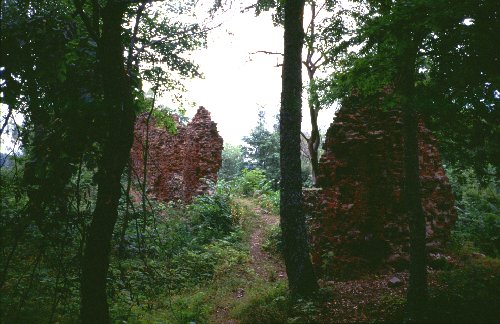
Romantically situated ruins in the forest, on a steep hill near a lake. Medium-size ruins, completely overgrown.
Bauska
(Bauske)
One of the major Order castles in Latvia.
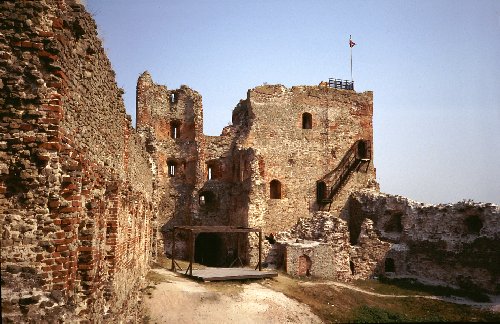
Built in 1443-1456 by the Livonian Order, on the confluence of the Musa and Memele rivers, to guard its southern borders and trade route to Lithuania.
During the Nordic War 2/3 of the town were destroyed, while the castle was blown-up by Czar Peter I in 1706. Hunger and plague further decimated the population in 1710.
1812 Napoleon went through the town on his way to Russia.
Cesis
(Wenden)
Order Castle ruins.
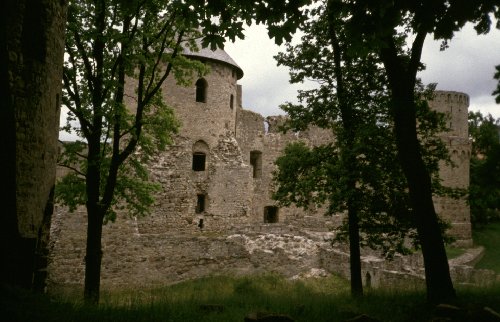
Built in 1218 by the German Knightly Order of the Brothers of the Sword. It was of central importance for the Livonian territories, and intermittently seat of the Master of the Order.
Around 1500: improved fortifications. Sacked by Russian army in 1577.
1777 construction of new castle on part of castle ruin grounds.
Cesvaine
(Sesswegen)
Eclectic-style mansion.
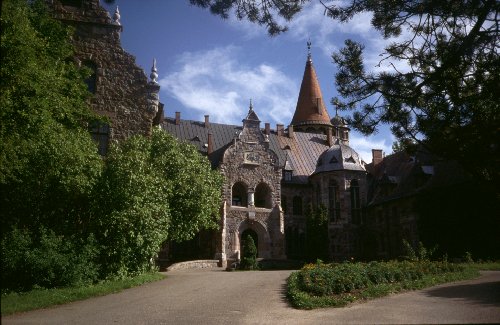
Built 1890-1897 on the site of the 14th century Archbishop's Castle, some fragments of which can still be found. Picturesque and well-preserved, it now houses a school.
Dobele
(Doblen)
Order Castle ruins.
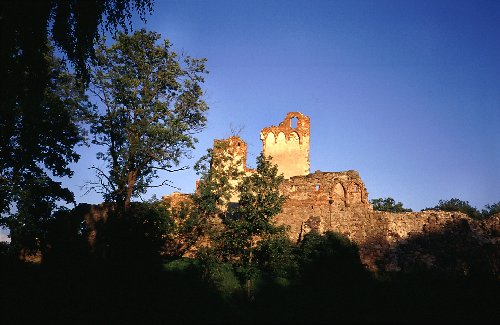
Founded in 1335 on the site of an important Semgallian fortress, which was sacked by the German Brothers of the Cross in 1289 after years of struggle.
Edole
(Edwahlen)
Order Castle

Originally built in 1264 as an Order castle. it was often ravaged during the ages, and finally burned down during revolutionary unrest in 1905. It was then reconstructed in neo-gothic style by Baron Alexander von Baehr.
Gaujiena
(Adsel)
Order Castle Ruins.
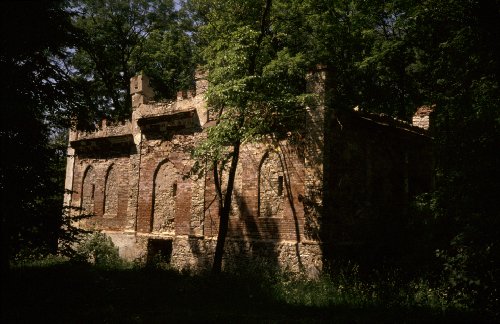
Built after 1224 by the Brothers of the Sword, who made it seat of the Orderskomtur, until that function moved to Aluksne (see above) in the 14th C.
Czar Peter I slept here in 1697 on his way to Western Europe. In 1702, during the Nordic War, it was occupied and ransacked by the Russian army.
Gaujiena
(Adsel)
The New Castle
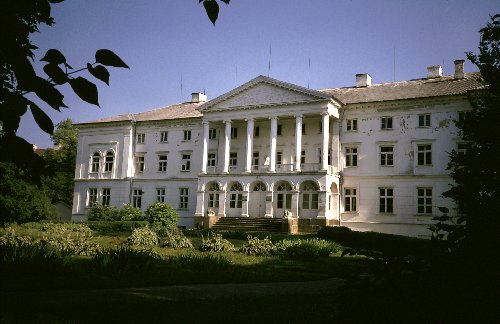
built in the mid-19th century, near the Order castle ruins which are now part of the surrounding park. Nice example of the Palladian classicism then popular in Latvia.
Grobina
(Grobin)
Order Castle ruins
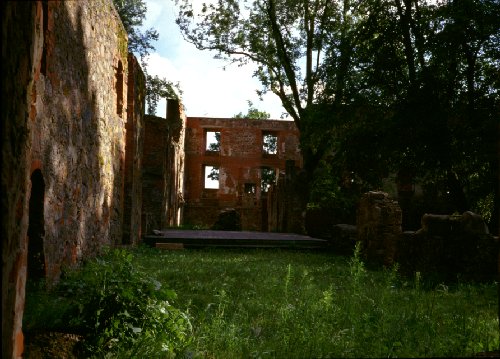
One of the oldest historical sites in Latvia: the Vikings already camped here during the 7th C.
Jelgavkrasti
Ruins of Castle Tower.
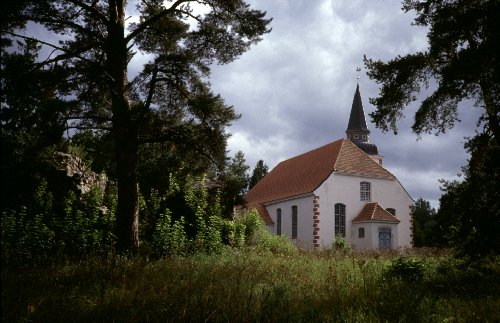
Remains of Castle Keep on left of picture. Simple, square tower with entrance well above ground level.
Kazdanga
(Katzdangen)
Castle at dusk.
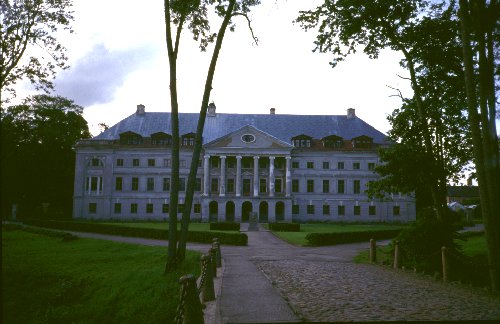
A typical Palladian classicist mansion. Designed in 1800 by the architect Georg Berlitz for Baron Karl Gustav von Manteuffel. It also has Latvia's largest and perhaps most attractive park (173 hectares).
Koknese
(Kokenhusen)
Ruins of Bishop's Castle
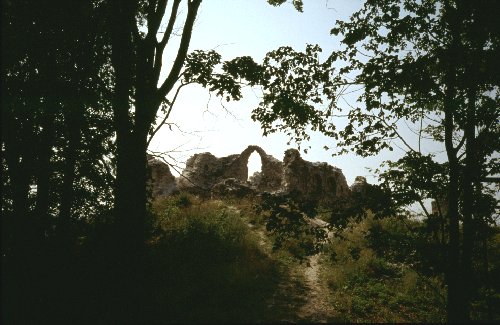
Strategically seated on the banks of the river Daugava, archaeological evidence shows the place to have been inhabited as early as the first millennium B.C. Seat of an important Latvian (wooden) fortress up to the early 13th C.
After expanding eastwards, Bishop Albert of Riga built a stone fortress here in 1208. 1397-1562 Seat of Arch-Bishop of Riga.
The city (1277) of Koknese was part of the Hanseatic league, but the ravages of successive wars diminished its importance.
Krustpils
(Kreuzburg)
Bishop's Castle.
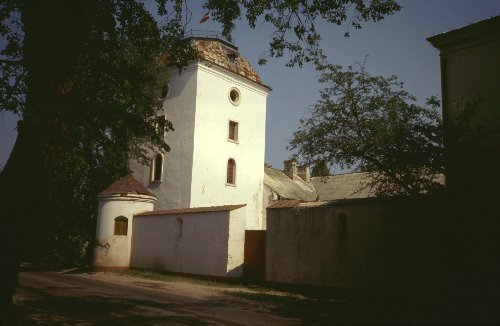
Founded in 1237 by Bishop Nikolai. Often changed hands, from the Bishopric to the Livonian Confederacy, to the Russians, Poles and finally the von Korff family. Often rebuilt.
Lielstraupe
(Gross-Roop)
Feudal Castle
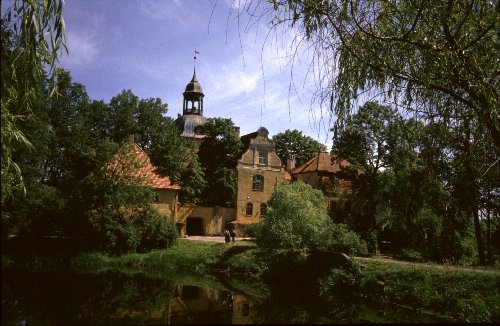
Built at the end of the 13th C. by Fabian von Rosen, vassal of the Riga Archbishop.
Often damaged during wars, it was always rebuilt. Last burned down during the 1905 uprisings, then reconstructed in original form.
One of Latvia's most attractive and often photographed castles. It nowadays houses a clinic.
Lizums
(Lysohn)
Castle at dawn.
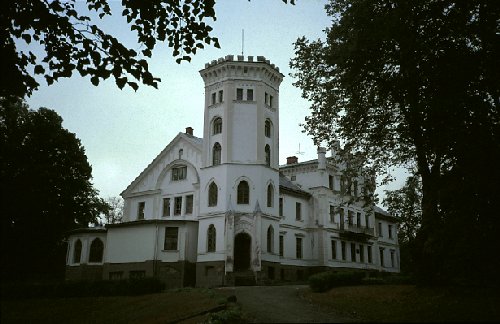
A typical neogothic mansion. Now houses a school (?) Small but picturesque little village.
Ludza
(Ludsen)
Order Castle ruins.
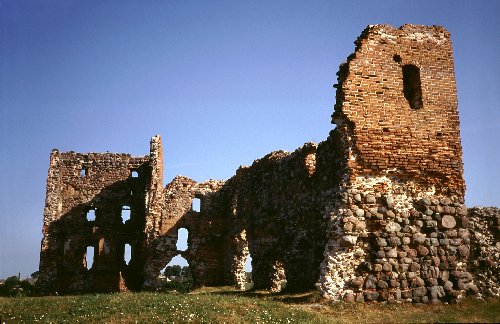
Ludza is a typical eastern Latgallian small town with a long history.
The Order castle was built during the 14th century, on the site of an older Latgallian fortress. It withstood Russian and Swedish attacks in the 15 up to 18th centuries, but was already reported as a ruin in 1756.
Makonpils
(Wolkenburg)
The Castle in the Clouds.

Built around 1263 on a steep hill on the southern banks of lake Raznas called Makonkalns or Cloud Mountain (248 m), this is the original Wolkenburg or Cloud Castle.
Many legends surround the place, which gradually collapsed after its abandonment.
Pelci
(Pelzen)
19th century castle
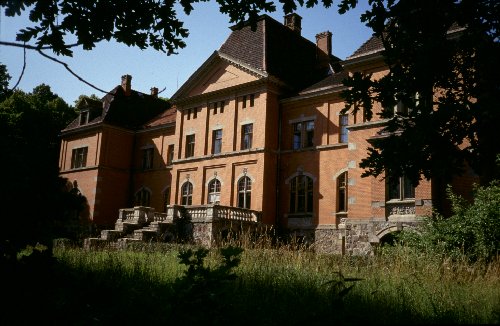
Quite well-preserved brick building, built 1904 in eclectic style. Seat of the German Command during the Battle of Courland at the end of WW2.
Pope
(Popen)
17-18 C. Mansion
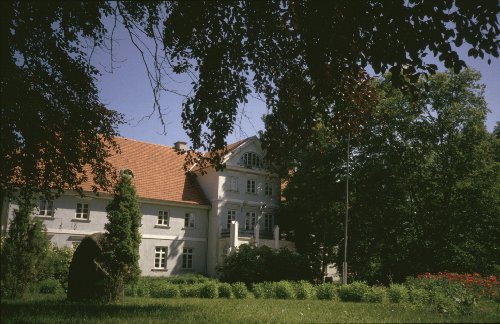
Not the most well-known but still one of the nicest mansions of Latvia. Property of the von Baehr family from 1581-1920, house and surrounding buildings 17-18 century.
Notable also for the many beech-trees in the park, unique for Latvia where beeches are generally absent (large Red Beech in the foreground.
Rauna
(Ronneburg)
Ruins of Bishop's Castle
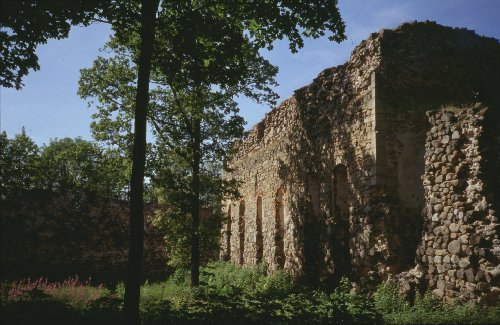
Founded 1262 under Archbishop Albert III, it was once the biggest and safest castle of the Riga Archbishopricy. Yearly seat of Archbishop from Sept. 29 to Febr. 7.
Often damaged during fights between the Archbishopricy and the Order State. Major reconstructions in 1509-1524.
Heavily damaged during the Nordic war (1654-1667)after which the defences were no longer repaired. Still inhabited until at least end of 17th C.
Riga
Order Castle
(in background)
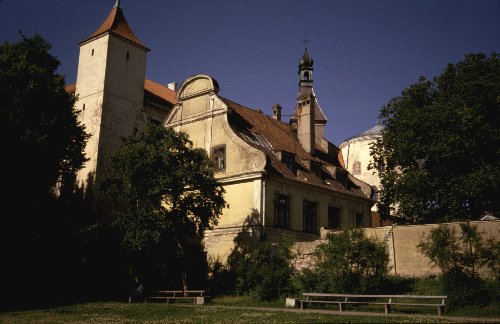
The Riga Order Castle (in background, not the bell-gabled building in the foreground) was founded on June 15, 1330 by Bishop Albert. Work, led by mason Dietrich Kreige, was finished in 1338. Residence of the Master of the Livonian Order.
During 10-year war between the Order and the city of Riga (1481-1491) it was often vehemently attacked. After surrender in 1484 the city council decided to demolish the building, which was only partly accomplished.
In 1515, under Master of the Order Wolter von Plettenberg, it was rebuilt in essentially its original form.
1565: Fall of the Livonian Confederacy, castle occupied by Polish administration.
1621-1710: Swedish administration, major additions in 1649 and 1682.
Late 18th-19th century: major reconstructions, much loss of original substance.
After WW1 Presidential residence, nowadays houses a number of museums.
Rundale
(Ruhenthal)
Baroque Castle
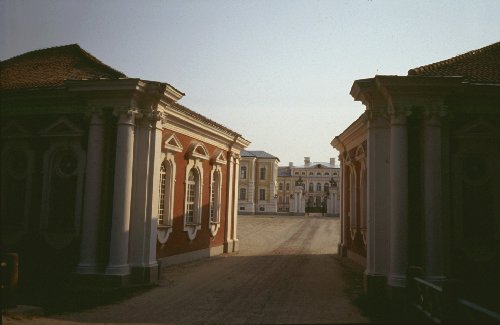
Definitely Latvia's most famous castle.
Started in 1736 by Duke Ernst Johann Biron (a favourite of Czarina Anna Ivanovna). Its major architect was Francesco Bartolomeo Rastrelli (1700-1771; of St. Petersburg fame)
Work stagnated after Biron was appointed Duke of Couronia and moved to Jelgava/Mitau. After the death of Anna Ivanovna he fell from grace and was exiled.
23 Years later Biron was pardoned and returned, with Rostrelli, to continue the work, which ended in 1768.
After the dissolution of the Couronian Duchy it was given to Count Subov, later the Count Shuvalov family owned it until 1920.
Major restorations started in 1972.
Sigulda
(Segewold)
Order Castle Ruins.
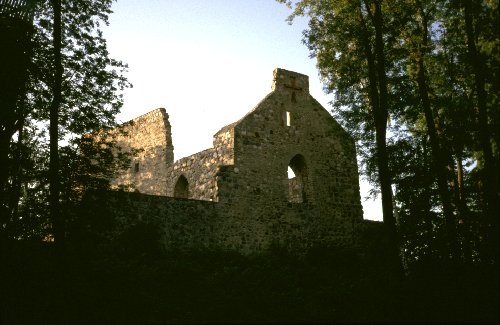
Possibly the most attractive, certainly the most touristic castle ruin of Latvia. Many legends surround this place, as well as Turaida (below) on the opposite side of the river Gauja.
Here the final battles between the Livii and the Brothers of the Cross took place. After their final victory in 1212 the Brothers of the Cross built a stone castle here. Major rebuilding during the 14th C. It later fell into decay.
In 1878-1888 a New Castle was built on the forefront of the ruins.
Tirza
(Tirsen)
Mansion on site of old Order Castle
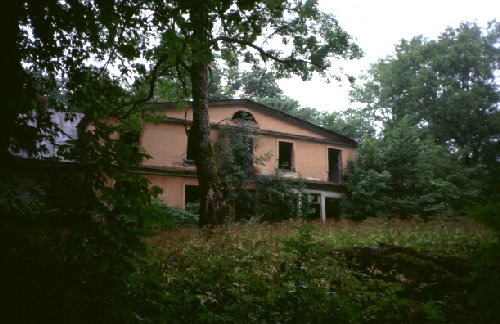
The Mansion, built on the ruins of the old Order Castle, was gutted during the 1905 Peasant's Revolt. About 100 mansions were ransacked during this period. Partly burned-out it is now left to collapse. Small fragments of the medieval castle can still be found.
Trikata
(Trikaten)
Ruins of Order Castle
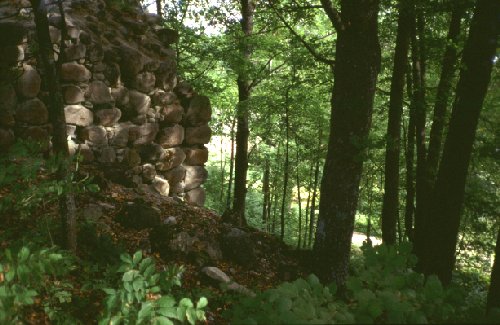
Probably the site of the legendary Beverinas Fortress, seat of the Latvian headman Talibaldis. Built in 1284 and destroyed during the Livonian war, not very much remains of the old castle, but it's still nicely situated on a steep hill between the river Abuls and lake Trikata.
Turaida
(Treyden)
Ruins of Bishop's Castle
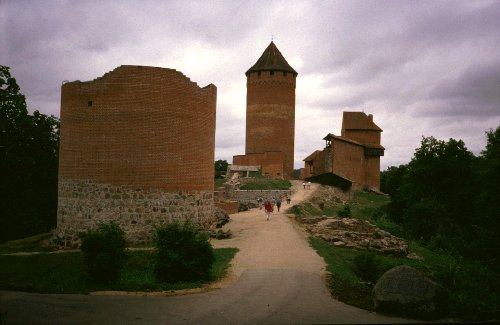
Its name is said to derive from Toro Aida, or God's Garden in Livonian. Anyway, it is generally considered one of the most romantic places in Latvia.
Site of the fortress of the Livonian headman Kaupo, who was the first Livonian to be christened and travel to Rome. This was destroyed during an uprising in 1212. In 1214 Bishop Albert built a stone castle on the site.
Often destroyed and rebuilt during the centuries. Major reconstructions started in 1953 and continue to this day.
The central watchtower is still largely original. From it one has a wide view over the surrounding forests of the Gauja National Park and the river Gauja itself.
Valmiera
(Wolmar)
Entrance Tower
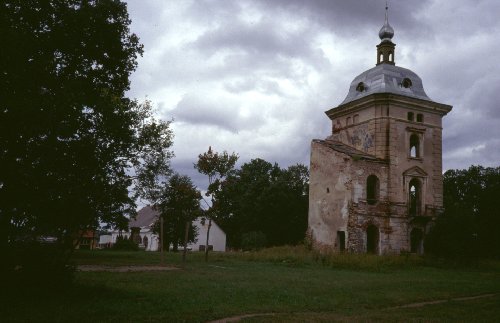
Located on the western edge of town, not to be confused with the ruins of the Order Castle. The actual castle here has completely vanished, on its site now stand a couple of apartment buildings.
Valmiera
(Wolmar)
Ruins of Order Castle.
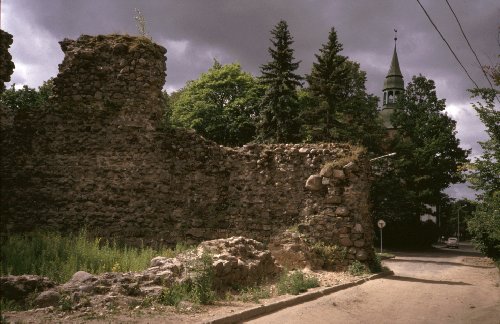
This wall is most that remains of the Order castle, built in the 1280's. The 1283 Church of St. Simon can be seen in the background.
Varaklani
(Warkland)
Classicist mansion.
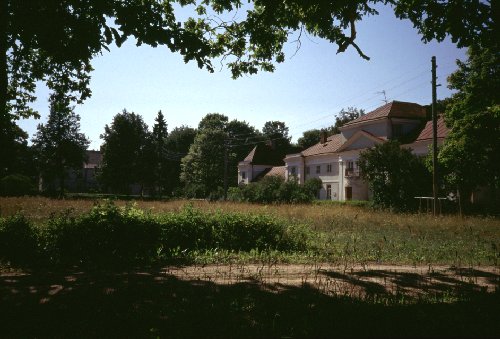
Remarkably grandiose palace architecture in otherwise very sleepy little village.
Built by Michal Jan von der Borch (1751-1811, son of the Polish Great-Chancellor and important scientist and statesman) in 1783-1789. Architecture and garden by Italian Vinzenzo Mazotti.
Ventspils
(Windau)
Town Castle.
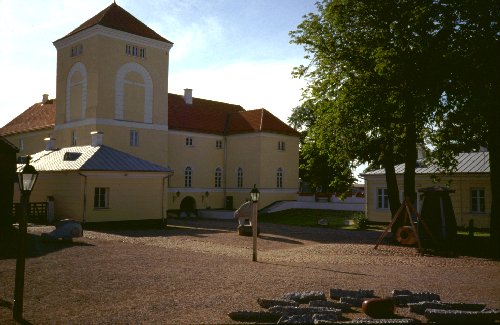
The recently renovated Ventspils Order Castle. Established around 1290, largely remodelled in 15th C. Already during the 13th C. the main tower held a fire beacon for ships heading toward the port. During the 19th C. it was reconstructed as a prison.
Zentene
(Senten)
Typical Palladian mansion.
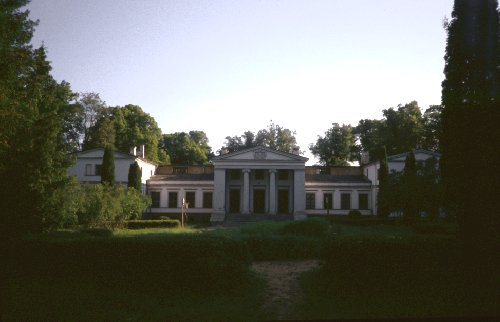
About halfway between Tukums and Talsi; built in 1850 in classicist style. At the time property of the Von Lieven family, nowadays houses a school.
Zvartava
(Adsel-Schwarzhof)
Historical-style Mansion.
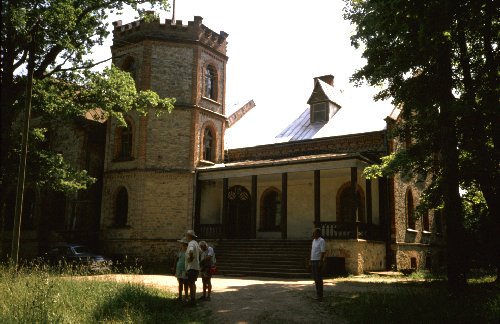
Typical 19th century mansion near the town of Gaujiena (see above).
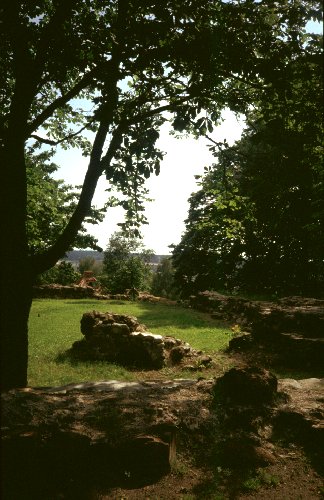 |
Latvian & Baltic links:
Castle Links:
Other Pages by the Author:
Foreword
For its modest size, the Baltic Republic of Latvia offers a surprisingly wide array of castle architecture, spanning from early 13th century up to the beginning of the 20th.
Shown here is an alphabetically arraigned cross-section, by no means extensive, in photographs made by the author.
Joost Lemmens
N.B.: Old German names in brackets. Page may take some time to load!